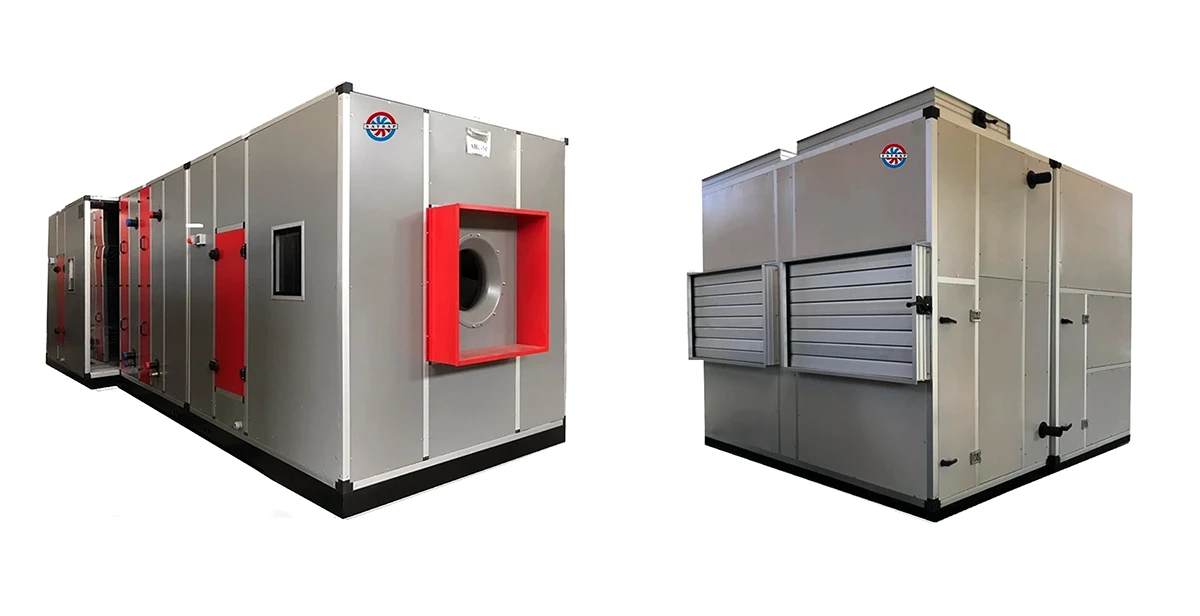Hygienic vs. Conventional Air Handling Units
Air Handling Unit (AHU): A device used for ventilation and controlling temperature, humidity, pressure, and particulate matter in various environments. AHUs are produced in different types, one of the most important classifications being based on the level of air filtration. In this article from Satrap Tahvieh Alborz, we will examine the difference between hygienic and ordinary AHUs.
Hygienic AHU: A device capable of controlling air pollutants and particulate matter with the highest quality. This type of AHU is also known as a sanitary AHU because it can absorb 99% of particulate matter and dust. Hygienic AHUs are typically produced in capacities of 1500 to 65,000 cubic feet per minute.
Components of Hygienic AHU
- Fan
- Electric motor
- Coil
- Humidification equipment
- Structure
- Filter
- Damper
- Inlet and outlet ducts of the ventilation system
Applications of Hygienic AHU
Hygienic AHUs are used in spaces that require clean and germ-free air. Some of the applications of hygienic AHUs include:
- Operating rooms and medical centers
- Pharmaceutical and food industries
- Laboratories
- Clean rooms
- Production halls
Advantages of Hygienic AHU
Hygienic AHUs have many advantages over ordinary AHUs. Some of the advantages of hygienic AHUs include:
- Creating a completely sterile and hygienic environment
- Reducing the risk of infectious diseases
- Increasing workforce productivity
- Reducing maintenance and repair costs
Differences between Hygienic and Conventional Air Handling Units
Hygienic and conventional air handling units (AHUs) differ in several aspects, including filtration, application, body material, sealing, fan and motor, and price.
Filtration
Hygienic AHUs have a multi-stage filtration system that effectively removes particulate matter, dust, bacteria, viruses, and other airborne contaminants. Conventional AHUs typically have one or two simple filters capable of capturing large-sized particles.
Application
Hygienic AHUs are designed for use in spaces requiring clean and germ-free air, such as hospitals, clinics, pharmaceutical plants, and food processing facilities. Conventional AHUs are suitable for use in public and commercial spaces such as offices, malls, and restaurants.
Body Material
Hygienic AHUs are typically made of stainless steel to prevent corrosion and rust. Conventional AHUs are usually made of galvanized steel, which is a more affordable option.
Sealing
Hygienic AHUs have a fully sealed body to prevent moisture from entering the unit. Conventional AHUs may have a less sealed body.
Fan and Motor
Hygienic AHUs usually have higher quality fans and motors than conventional AHUs.
Price
Hygienic AHUs are more expensive than conventional AHUs due to the use of higher quality and more complex components.
Conclusion
Both hygienic and conventional AHUs are HVAC systems that can control temperature, humidity, and air quality in an environment. However, hygienic AHUs are more suitable for use in spaces requiring clean and germ-free air due to their ability to control airborne contaminants more precisely.

